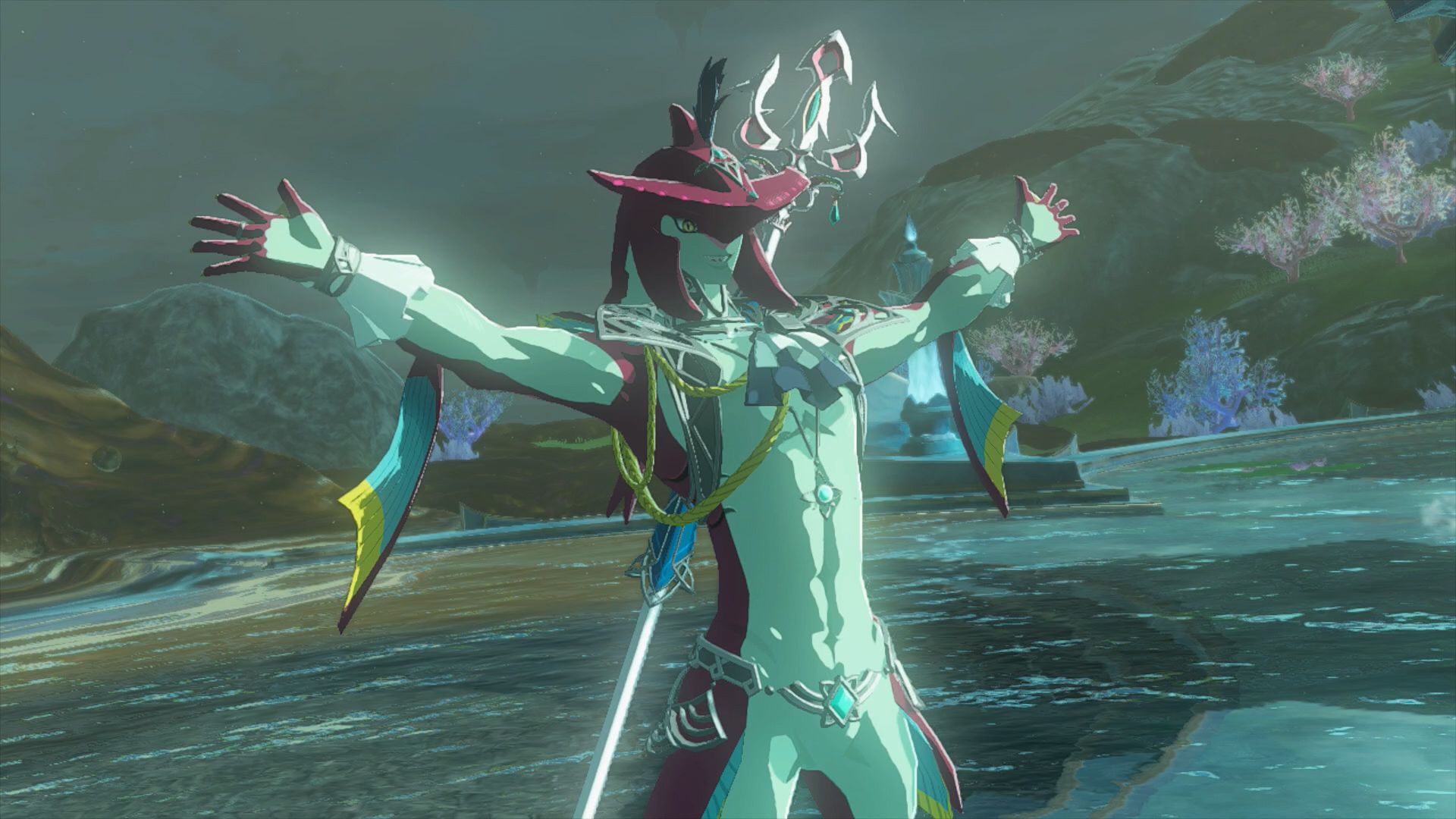
There's a weird geographical quirk in the Legend of Zelda: Tears of the Kingdom map - none of its rivers drain into the sea, and half of the game's freshwater ends up in an unnamed pond.
YouTuber Any Austin recently took it upon themselves to chart the many waterways that crisscrossed Hyrule. And their first observation is that none of those rivers reach the sea. At none of the points in Hyrule that look like they might be some kind of estuary, delta, or other river endpoint does the water actually drain into the sea. So with all that water flowing around, where does it actually go?
The answer lies in a lengthy map of Tears of the Kingdom's waterways, where Any Austin gradually comes to several other interesting realizations. One of those is that many of Hyrule's waterways that appear separate are actually connected - their links aren't shown on the map, but that's because they're joined together by underground caves that can't be seen on the surface. That leads him to his next discovery - those caves weren't present in Breath of the Wild, suggesting that the water courses have changed substantially in the time between the two games.
In turn, that brings him to another revelation - there are whole swathes of Tears of the Kingdom's version of Hyrule that have been massively altered by the changing paths of the water. New wetlands, gorges, caves, and waterfalls are not only present on the map, but have re-shaped it substantially.
But in the course of charting all these rivers, Any Austin makes a handful of discoveries that are all much more important than a new map. The first, of course, is that those rivers don't reach the sea - earlier this year, Any Austin charted Skyrim's rivers, and found that they do reach an expected endpoint, but in Hyrule, there's no connection between freshwater and saltwater. That's partly because of his second big discovery - all of Hyrule's rivers are in fact the same river. Everything is connected up to everything else, and while the river splits up a number of times in a manner that's geographically unlikely, it all finds its way to the same endpoint.
One of those endpoints, unsurprisingly, is Lake Hylia, where an enormous whirlpool provides the answer as to where all that water is going - it's simply draining out of the map. That comes with its own issue - all that water draining away is likely to cause some pretty gnarly erosion, which is probably bad news in the long-term. While half of the kingdom's water is ending up in perhaps the most famous water feature in Zelda history, "half of the water in Hyrule [...] goes to a lake that they didn't even bother to name because it was so unremarkable." Any Austin goes on to suggest that that lake is so unremarkable that if you asked the Zelda devs where all the river water goes "they'd half-guess and say that it all goes to Lake Hylia. But it doesn't - it goes somewhere so much less notable."
That seems like the kind of thing a team might decide to change in a sequel, but I suppose we'll never know - Zelda series producer Eiji Aonuma says the next Zelda game probably won't be a Tears of the Kingdom sequel, because Nintendo's exhausted the creative possibilities of the setting. Perhaps that's for the best, though, because if you check Any Austin's work, Lake Hylia is probably about to fall in and take the entire kingdom with it anyway.
Sign up to the GamesRadar+ Newsletter
Weekly digests, tales from the communities you love, and more
You thought everything to do in Tears of the Kingdom had been done? Check out this massive Zelda rock collection.

I'm GamesRadar's news editor, working with the team to deliver breaking news from across the industry. I started my journalistic career while getting my degree in English Literature at the University of Warwick, where I also worked as Games Editor on the student newspaper, The Boar. Since then, I've run the news sections at PCGamesN and Kotaku UK, and also regularly contributed to PC Gamer. As you might be able to tell, PC is my platform of choice, so you can regularly find me playing League of Legends or Steam's latest indie hit.



